#peruvian literature
Text

Mario Vargas Llosa (28 March 1936) is a Peruvian novelist, journalist, essayist and former politician.
“Writers are the exorcists of their own demons.”
Mario Vargas-Llosa
#vargas llosa#mario vargas llosa#peruvian literature#books#classic books#reading#books and reading#quotes#quote#inspiring quotes#life quotes#quoteoftheday#inspirational quotes#booklr#bookish#classic literature#literature quotes#bibliophile#books and libraries#lit#prose#spilled ink#book recommendations#literature#words#writers and poets#writing#birthday
21 notes
·
View notes
Text

"La insignia" is available to read here (NOTE: This link leads to the text as it was originally written in Spanish)
#short stories#short story#la insignia#julio ramón ribeyro#julio ramon ribeyro#peruvian literature#spanish language literature#20th century literature#have you read this short fiction?#book polls#completed polls#links to text
5 notes
·
View notes
Photo

From the Quechua oral tradition to the Hispanic colonization and the Spanish literature that would result, Peruvian literature has a rich and complicated history. In my new list for Book Riot, I recommend eight Peruvian books in translation that span a wide range, from surrealist and hazy short stories to creative memoir to rich, bloody historical fiction. Check out the list!
#books in translation#peruvian literature#women in translation#little bird#mario vargas llosa#book stack#book riot
25 notes
·
View notes
Text
youtube
Review: "The Storyteller" by Mario Vargas Llosa -
Llosa poses so many challenging questions for indigenous cultural protection in this dual narrative work, but it is locating the essential component of that identity, story, which emerges as narrative voice and makes this a unique and compelling read. What is more sacred even than religion?
#bookworm#literature#book reviews#read read read#books#indigenous literature#mario vargas llosa#the storyteller#peru#peruvian literature#latino literature#indigenous peoples#colonization#Youtube
0 notes
Text
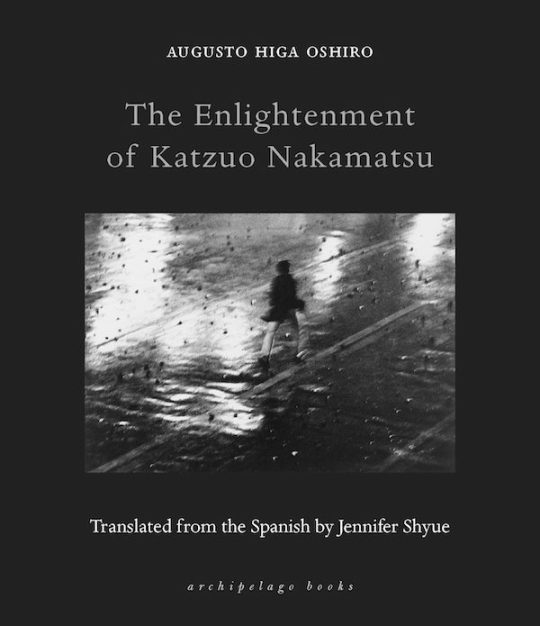
Currently Reading
Augusto Higa Oshiro
THE ENLIGHTENMENT OF KATZUO NAKAMATSU
Translated from the Spanish by
Jennifer Shyue
1 note
·
View note
Text

Preparing to finally take a trip that has been postponed since 2020. Preparing, of course, by reading. Finding nonfiction about Peru (by both Peruvians and non-Peruvian writers) has been pretty easy, but I am struggling with novels. I read Red April several years ago and thought it was masterful though too bleak for me, and Conversations in the Cathedral is on my kindle waiting for me. Otherwise I’m coming up short! Anybody have any book recommendations, especially fiction?
#i am not particular about genre though I do not tend to like straightforward romance novels and will not touch horror#adult booklr#book recommendation requests#Peru#peruvian literature
0 notes
Text


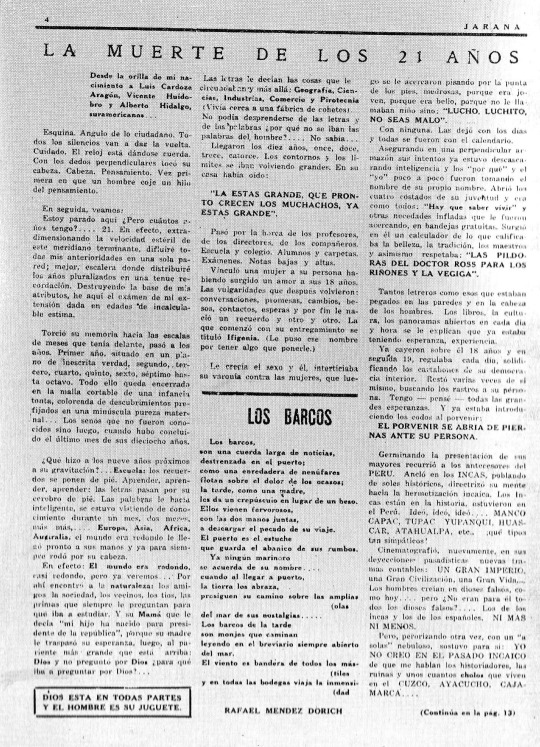


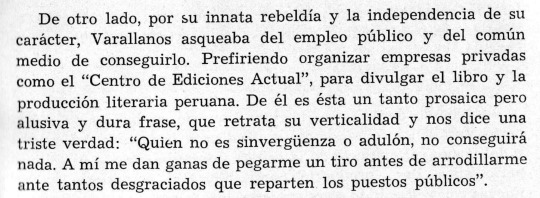

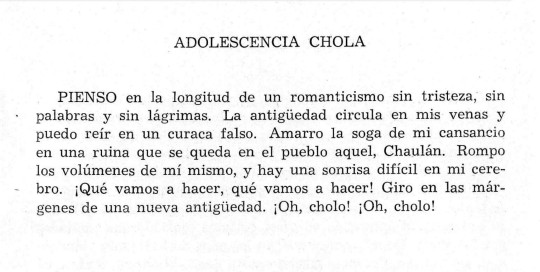
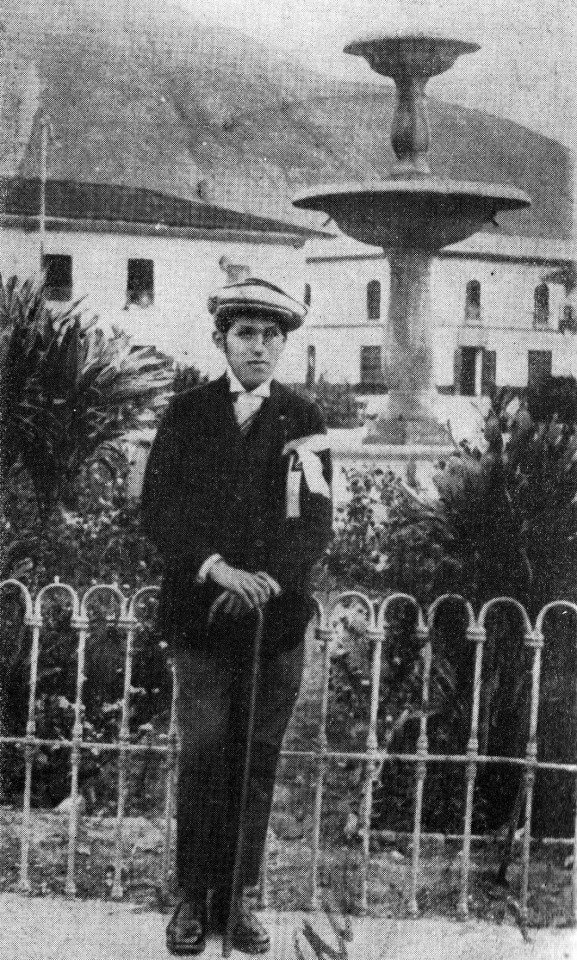

Mi tío bisabuelo Adalberto Vara Llanos fue un escritor vanguardista y precursor del suprarrealismo en el Perú. Falleció prematuramente a los veintiséis años.
My great grand uncle Adalberto Vara Llanos was an avant-garde writer and pionner of Surrealism in Peru. He passed away at the early age of 26.
- Adrián Elías Vega Salinas.
#peru#peruano#peruvian#literatura#literature#literatura latinoamericana#poetry#surrealism#surrealismo#escritores#escritor#art
2 notes
·
View notes
Text
“I have ghosts inside my head”: The Enlightenment of Katzuo Nakamatsu by Augusto Higa Oshiro
The feverish paragraph that extends across the first six pages of Augusto Higa Oshiro’s The Enlightenment of Katzuo Nakamatsu opens rather innocuously, with the titular character walking through the Parque de la Exposición in Lima, Peru on a pleasant afternoon. Suddenly the restrained and mild-mannered professor experiences a terrifying break with reality:
In the eternity of the instant, in a…
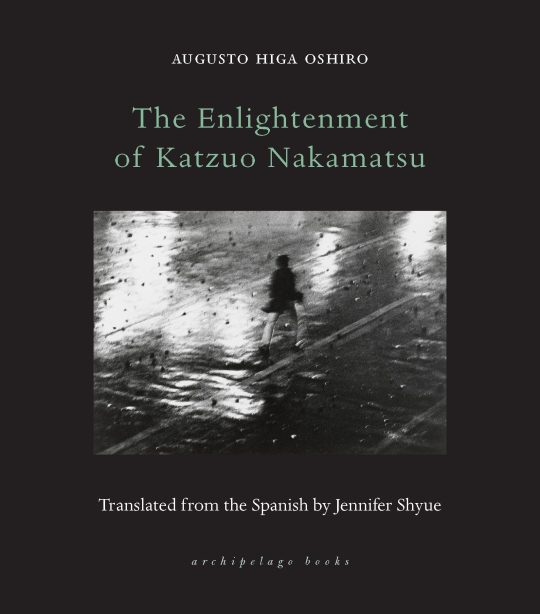
View On WordPress
#Archipelago Books#Augusto Higa Oshiro#book review#books#Japanese-Peruvian#Jennifer Shyue#literature#Peru#Spanish#The Elightenment of Katzuo Nakamatsu#translation
1 note
·
View note
Text
The War of the Pacific (1879–1883) looms large in the history of Peru and Chile. Upending the prevailing historiographical focus on the history of conflict, Beyond Patriotic Phobias explores points of connection shared between Peruvians and Chileans despite war. Through careful archival work, historian Joshua Savala highlights the overlooked cooperative relationships of workers across borders, including maritime port workers, doctors, and the police. These groups, in both countries, were intimately tied together through different forms of labor: they worked the ships and ports, studied and treated disease transmission in the face of a cholera outbreak, and conducted surveillance over port and maritime activities because of perceived threats like transnational crime and labor organizing. [...] Savala reconstructs the circulation that created a South American Pacific world. The resulting story is one in which communities, classes, and states formed transnationally through varied, if uneven, forms of cooperation.
Text above from “About the Book” section provided by the publisher (University of California Press, 2022) describing Beyond Patriotic Phobias: Connections, Cooperation, and Solidarity in the Peruvian-Chilean World. Book authored by Joshua Savala.
---
What was much more interesting to me than the well-documented and discussed nationalism that developed (in part) out of the war was the possibility of people who either did not care about such things or who actively organized against the nationalism of the era. [...] And [...] [revolutions] remained real options for many port and maritime workers across the first decades of the twentieth century. [...] In the larger manuscript, I expand on the place of maritime and port workers, looking more closely at their laboring conditions, their lives, and the politics of masculinity and sexuality at sea and at port. Another chapter examines medical cooperation during the cholera outbreak of 1886-88 in Chile. And the last chapter centers the police and their efforts to put new criminological methods into practice at home and transnationally. The broader project, then, sticks to this idea of transnational solidarity, mutual aid, and cooperation [...]. I wanted to avoid the diffusionist narrative, whether that be from a European center or from central Chile. [...] When we are researching and writing about [labor] [...], clearly many [...] sought to organize transnationally, to reach past state borders and [...] do away with borders. [...] But they were also intensely concerned with national politics and labor laws. [...] This is why [...] I try to push a dual transnational and comparative approach, to combine scales of analysis. [...] One of the other challenges to transnational history is simply the vast literatures one must read. Studying one place is hard enough [...]. The reward of such a venture, though, is pulling together debates and strands of the literature [...]. The Latin American Pacific has been largely overlooked. But thankfully in the past decade or so, we are beginning to see a number of new works that speak to the role of the Pacific. This shift in geography and analytical perspective, I would say, comes in large part from the transnational perspective -- a perspective that influenced the building of the Atlantic world paradigm as well.
Words of Joshua Savala. As quoted in the transcript of an interview conducted/posted by Sean Mannion. ‘Interview with Joshua Savala, author of “Ports of Transnational Labor Organizing: Anarchism along the Peruvian-Chilean Littoral, 1916-1928.”‘ HAHR Online (by Hispanic American Historical Review). 13 November 2019.
---
People in both countries occasionally made jokes about the other [...]. But [...] there was something beyond the one liners. [...] [T]he War of the Pacific (1879-1883) acted as the structuring event in the modern history of both countries, with conflict at the center. While certainly a reality, conflict [...] could not be the only way of telling this history, could it? [...] Labor and working-class history is at the core [...]. Maritime and port workers [...] lived and labored in a cosmopolitan Pacific world. Some did see and even engage in nationalist discourses. But many also had no interest in the nationalism of the day, and some analyzed it as just one more strategy by the state to divide the working class [...]. Addressing fellow Chilean workers in November 1924, one [...] wrote that it was time to show their Peruvian comrades that “patriotic phobias have not contaminated us.” This was the politics that animated radical workers along the coasts of Peru and Chile to organize around both local and transnational issues. Of course, maritime and port workers were not the only ones engaged in this type of thinking and acting. As I read reports from port cities, I started to read more and more about cholera in the 1880s. I followed letters from different institutions within Chile and Peru and medical journals and finally came across the case of Dr. David Matto. Born in Cusco, Matto would be sent to Chile to investigate the spread of cholera. His published letters back to Peru revealed some of the intricacies of the Chilean state’s response to the epidemic, useful information for thinking about the history of medicine [...]. The letters also showed that he worked closely with Chilean doctors, [...] and in the process built [...] a science without a nation. Beyond Patriotic Phobias builds parts of the South American Pacific to argue in favor of a more collaborative history. In addition, I also take time to think through laboring in the Pacific, constructions of masculinity and sexuality, and the history of policing. These are all parts of the equation required for understanding the transnational and oceanic history of Peru and Chile.
Text above by Joshua Savala. “A look inside Beyond Patriotic Phobias.” UC Press Blog. 23 May 2023.
32 notes
·
View notes
Text
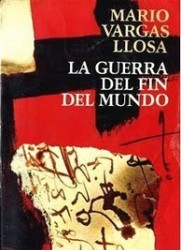
The War of the End of the World (La guerra del fin del mundo) is a novel written by Peruvian novelist Mario Vargas Llosa. Published on October 1, 1981.
“And yet, my dear Estela, in the end one accepts the will of God, resigns oneself, and discovers that, even with all its calvaries, life is full of beautiful things.”
Mario Vargas Llosa “The War of the End of the World”
#vargas llosa#mario vargas llosa#peruvian literature#latin american literature#magical realism#literary quotes#books#literature quotes#reading#books and reading#quotes#booklr#bookish#booksbooksbooks#prose#literature#writing
0 notes
Text
a peruvian teacher from my school gave me some literature recommendations of peruvian writers!!! i'm so happy!!!!!
#i love learning shit#my number one is the essays which are like philosophical/ anthropological#i'm on a physics lesson rn and I'm barely able to focus. fuck this shit i want to read those essays NOW ;_;
10 notes
·
View notes
Note
I'm here to rant and also to share the hypocrisy in Spanish-speaking fandoms... Or at least some parts of it.
So, due to the World Cup Latinoamerican people started shipping those two soccer players that're from different countries. In fact, the first shipping posts I saw about them were omegaverse. Nothing wrong with that, I think is funny and people are in the right to have enjoy the World Cup the way they want to.
But. I saw people (in groups, in my Contacts list) that hate RPF, who consider it immoral and traspassimg people's boundaries, sharing those post about the soccer players and giggling and saying the "this is true literature 🚬" meme. Granted, they're taking this as a joke. But joking or not, this is still RPF. So make your damn mind, you (general you) think this is gross and immoral and bad or you take it to have the laugh of your life, huh?
I hate this kind of hypocrisy, "doble cara", whatever. Just accept you all are shipping RPF, I swear is not that hard, as if the vast majority of Spanish speaking fandom didn't ship a Minecraft RPF ship since 2010 or so LOL.
--
This reminds me of a Peruvian dude I knew ages ago who was like "Wow, Americans are so into sports" and we were like "Uh... soccer though?" and he was like "THAT'S DIFFERENT".
54 notes
·
View notes
Text
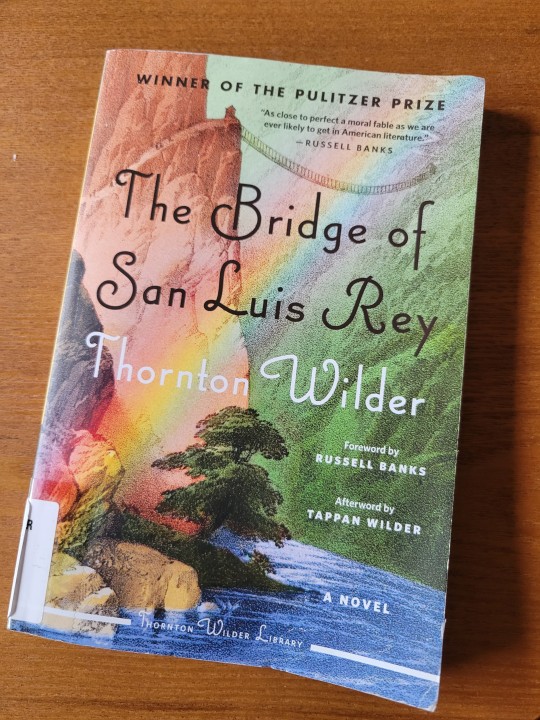
The Bridge of San Luis Rey. By Thornton Wilder. Harper Perennial, 2021 (original publication: 1927).
Rating: 4.5/5 stars
Genre: literary fiction
Series: N/A
Summary: On Friday noon, July the twentieth, 1714, the finest bridge in all Peru broke and precipitated five travelers into the gulf below. With this celebrated sentence Thornton Wilder begins The Bridge of San Luis Rey, one of the towering achievements in American fiction and a novel read throughout the world.By chance, a monk witnesses the tragedy. Brother Juniper then embarks on a quest to prove that it was divine intervention rather than chance that led to the deaths of those who perished in the tragedy. His search leads to his own death -- and to the author's timeless investigation into the nature of love and the meaning of the human condition.
***Full review below.***
Content Warnings: attempted suicide
Overview: I don't know much about Thornton Wilder (or about 20th century American literature, for that matter). I haven't read or seen Our Town, so my evaluation of this book is coming out of complete ignorance. I happened to find it on a list of recommended historical fiction novels, and the premise was intriguing, so I gave it a go. Overall, I was surprised by how much I liked this book. Wilder's characters were eccentric and compelling, and his prose style brought them to life in rich, vivid detail. While I can see some readers become frustrated with the lack of an overarching narrative, the individual character portraits were so captivating that this book gets 4.5 stars from me.
Writing: Wilder's prose is superb. It feels elegant without being overly lyrical or formal; it brings characters to life with descriptions evocative of a 18th or 19th century folktale. I really loved the hint of "wisdom literature" that Wilder injected into his writing, and I loved that the book felt old-fashioned yet fresh and new at the same time.
Plot: There isn't really a plot to this book so much as there is a number of character portraits that are brought together following the collapse of a Peruvian bridge. When the bridge of San Luis Rey collapses and sends 5 people falling to their death, a witness named Brother Juniper resolves to investigate in hopes of convincing the locals that their deaths were part of God's plan. The bulk of the novel, then, includes descriptions of the victims, their backgrounds, and their lives so that Brother Juniper may definitely answer the question "why did these 5 people die?"
If you like plot-driven stories, then you probably won't enjoy this book, but if you like character-driven works, this is a spectacular example. The characters all have unique quirks and an array of desires, and many of them have an almost obsessive preoccupation with the object of their affections. Doña María, for example, is desperate for her daughter to love her while Esteban is so connected to his brother that his death leaves him feeling empty. Themes such as love/obsession and religion/spirituality are woven so deftly throughout the novel that it was a delight to see them reappear at different points, each exploring a new facet.
I also very much admired the way Thornton made all the characters feel interconnected. Though they didn't always interact with one another, they belonged to the same community, often crossing paths with prominent secondary characters. This meant that their deaths didn't feel random, but didn't feel like a punishment, either. Instead, it felt like Thornton was painting a picture of a tragedy, one that is deeply felt by the whole town and which has ripple effects across different strata of society. It was incredibly satisfying to read.
Characters: There are quite a few characters in this book, so I'll speak about them more generally rather than giving a detailed critique.
The five victims of the bridge were complex, somewhat eccentric, and very well-realized. I loved that each of them felt unique but all fit into the same world without issue, and I appreciated the way they were used to explore the major themes of the book. While each of them were some mixture of good qualities and bad ones, I didn't get the sense that I was reading about heroes and villains. Each one had attributes that made me like them or feel sorry for them, and each had things that made me side eye them a little bit.
Secondary characters were also masterfully used, often showing up as anchor points across multiple chapters. Both the abbess and the actress, for example, are powerful personalities, and they have unique relationships with each of the victims that makes this book feel like a series of interconnected, overlapping paths. If you enjoy those kinds of "composite novels," you'll definitely appreciate Thornton's work here.
TL;DR: The Bridge of San Luis Rey is a masterful meditation on the meaning of human life, made all the more impactful by its elegant, gnomish prose and cast of complex characters. While some readers might be turned off by lack of a tight narrative and the open-endedness of the denouement, this book is a wonderful study of character, and I would recommend it to anyone interested in creating memorable, impactful character vignettes.
6 notes
·
View notes
Text
SOUTH AMERICAN RESOURCES
The Anthropological Masterlist is HERE.
South America is an American continent that is underneath North America.
AFRO-BRAZIL ─ “The Afro-Brazilian people are an African people. They live in Brazil.”
─ Slavery in Brazil
ARGENTINA ─ “The Argentine, or Argentinian, people are a South American people that share the Argentine culture. They are native to Argentina.”
─ Argentine Information
─ Argentine Literature (in Spanish)
─ Argentine History
BOLIVIA ─ “The Bolivian people are a South American people that share the Bolivian culture. They are native to Bolivia.”
─ Bolivian Information
─ Andean Culture
─ Andean Music
BRAZIL ─ “The Brazilian people are a South American people that share the Brazilian culture. They are native to Brazil.”
─ Brazilian Information
CANDOMBLÉ ─ “Candomblé is a Brazilian diasporic religion that resulted from the syncretism of existing religions such as Yoruba and Roman Catholic Christianity.”
─ Candomblé Music
CHILE ─ “The Chileans are a South American people that share the Chilean culture. They are native to Chile.”
─ Chilean Information
─ Chilean Culture (in Spanish)
─ Chilean History
CHILOTE ─ “The Chilote, or Chilota, people are anyone that lives in the Chiloé Archipelago off the coast of Chile. They share the Chilote culture.”
─ Chilote Churches
COLOMBIA ─ “The Colombian people are a South American people that share the Colombian culture. They are native to Colombia.”
─ Colombian Information
─ Colombian Culture
─ Colombian History
ECUADOR ─ “Ecuadorians are a South American people that share the Ecuadorian culture. They are native to Ecuador.”
─ Ecuadorian Information
─ Ecuadorian Culture
─ Ecuadorian Culture
GUYANA ─ “The Guyanese are a South American people that share the Guyanese culture. They are native to Guyana.”
─ Guyanese History
PERU ─ “The Peruvian people are a South American people that share the Peruvian culture. They are native to Peru.”
─ Peruvian Information
─ Machu Picchu Information
─ Peruvian Indigenous Cultures
TRINIDAD AND TOBAGO ─ “The Trinidadian and Tobagonian, or Trinbagonian, people are a South American people that share the Trinidadian and Tobagonian culture. They are native to Trinidad and Tobago.”
─ Trinidad and Tobago Information
─ Trinidad and Tobago English
─ Trinidad and Tobago Slang
VENEZUELA ─ “The Venezuelan people are a South American people that share the Venezuelan culture. They are native to Venezuela.”
─ Venezuelan Information
─ Venezuelan Information
─ Venezuelan History
#resources#south america#afro-brazil#argentina#bolivia#brazil#candomblé#chile#chilote#colombia#ecuador#guyana#peru#trinidad and tobago#venezuela
58 notes
·
View notes
Text
i need to read more australian literature. i need to read more chinese literature. i need to read more peruvian literature. i need to read more french literature. i need to read more egyptian literature. i need to get paid to sit leisurely in an overstuffed armchair sipping an iced latte and reading books, taking long breaks to stare into space and contemplate them. i need to read more.
14 notes
·
View notes
Text
Los cachorros - Mario Vargas Llosa
Los cachorros es un relato del escritor peruano y Premio Nobel de Literatura 2010 Mario Vargas Llosa, publicado por primera vez en 1967 por la editorial española Lumen, en su serie Palabra e Imagen, junto a las fotografías de Xavier Miserachs. El texto es una metáfora tragicómica de la sociedad limeña. El tema se centra en un hecho real que ocurrió en Perú y que Vargas Llosa leyó en un recorte de periódico hace años: la emasculación de un muchacho por el ataque de un perro. La narración aborda diferentes temas: el machismo y la violencia, la hipocresía, la moral de las apariencias, el fracaso, la frustración y la muerte. Entre ellos destacan dos argumentos fundamentales: la castración y la crítica a la sociedad burguesa.
Lee más sobre este relato en Wikipedia.
The Cubs - Mario Vargas Llosa
The Cubs is a story by the Peruvian writer and 2010 Nobel Prize for Literature Mario Vargas Llosa, first published in 1967 by the Spanish publisher Lumen, in its series Palabra e Imagen, together with the photographs of Xavier Miserachs. The text is a tragicomic metaphor for Lima society. The theme focuses on a real event that occurred in Peru and that Vargas Llosa read in a newspaper clipping years ago: the emasculation of a boy by the attack of a dog. The narrative addresses different themes: machismo and violence, hypocrisy, the morality of appearances, failure, frustration and death. Among them, two fundamental arguments stand out: castration and criticism of bourgeois society.
Read more about the author on Wikipedia.
8 notes
·
View notes